The de Piro Family
COSIMO de Piro, (spelt de Pyrrho or d’Epiro in some of the earlier archives) left Rhodes in the general exodus of the Knights of St John and settled in Malta when the islands were granted to that brave Grand Master Fra Philippe Villers de L’Isle Adam in 1530. He married Gerolama La Mattina. His loyalty was rewarded when he was given trusted responsibility by the Knights of Malta and made Commander of the Arsenal of the Sovereign Prince.
PAOLO his second son married Giovanella Albano and later Galizia Salemi. The second marriage produced:

LORENZO UBALDESCO J.U.D Juris Utriusque Doctor, (meaning he was a doctor of both Civil and Canon law). His degree, an illuminated manuscript from the University of Messina, survives in the family archives and is dated 1668. He was appointed Uditore to Grand Master Adrien de Wignacourt in 1694. He married Cornelia Cauchi and at her death took Holy Orders becoming a Conventual Chaplain of the Knights and eventually Archdeacon of the Cathedral. He strove and eventually succeeded in procuring privileges for himself and his canons. By special decree, he was allowed not to be buried at St John’s but in the Cathedral instead. Pope Clement XI allowed him, ” …to totally abstain from presiding over executions and torture involving blood crimes…” He entailed his property in perpetuity in favour of his son the holder of the newly-granted title (1716) of Baron of Budach.
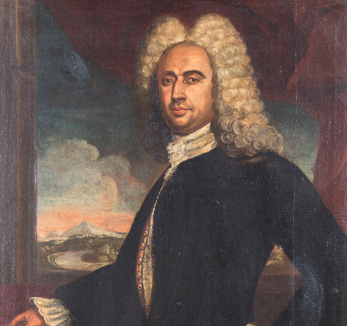
GIOVANNI PIO (Gio’Pio) J.U.D. 1st Baron of Budaq and 1st Marquis de Piro 1673-1752 – He studied for his doctorate in Rome. He was appointed ambassador representing the Grand Master and the Università as procurator of Wheat. Grand Master Perellos created him Baron of Budach in 1716 with a tribute of two muskets to be paid on the feast of St Barbara every year. He became a Segreto of the Inquisition in 1720 and in 1728 was Curator of the Holy Office. He was placed in a position of further trust by being appointed Secreto of Malta, Gozo and Comino. His honours increased: he was appointed Lieutenant of the regimental company to which the Grand Master’s famigliari belonged. He was appointed Regio Secreto of Syracuse by the King of Spain.
By 1742 Gio’Pio was Senior Jurat of Valletta. As a stepping stone to his final accolade he was temporally created Viscount Cartely but this title was suppressed in order to raise him further: on November 6th, 1742 Philip V of Spain raised him to the rank of Marquis de Piro in the Kingdom of Castille.
Gio’Pio was an entrepreneur with seemingly insatiable ambition and unflagging energy. He was soon in charge of his family’s business including the transactions involving infidel slaves. The family archives hold a bill for 1,500 Scudi representing one transaction in which Gio’Pio is selling Muslims to a Muslim trader called Rais. But these were early days in his career, soon he would concentrate on other people’s administrations and prove his reliability.
His marriage to Anna Antonia Gourgion considerably increased his worldly assets, and fortune seems to have been showered upon him for the rest of his life. His wealthy father-in-law’s administration fell into his lap: Giovanni Gourgion was a landowner, Magistro di Sala of the Valletta Magisterial Palace and even a patron of Mattia Preti’s. The artist painted both Giovanni and his wife pouring water over the Holy Souls in Purgatory in a great altarpiece at St George’s Basilica in Gozo.
Gio’Pio’s career was a triumph and perhaps the most successful of any Maltese man of his period. He invested in land, ships, and cargoes of textiles, grain, sugar, rice and coffee. He would sometimes insure cargoes and ships on his own account. He sometimes lent money, and quite often to Knights of Malta including the illustrious Fra Carlo Albani, nephew of Clement XI.
Gio’Pio purchased land all over Malta, and, in Sicily, great tracts in the plains of Girgenti. He kept houses in Valletta, in Mdina, and, by the sea in Scicli and also in the hexagonal city of Avola. He also invested in good unions. He married off his daughter to the Baron Ferdinando de Ribera and his granddaughter to Francesco, eldest son of the Duke of Montalto. Both ladies were given conspicuous dowries, the descriptions of which survive in the family archives.
His business affairs were administered with efficiency. The surviving papers including many of his letters make the point. He was always aware of what was happening and crosschecked his information through a series of agents in Malta, Sicily, Naples and Rome. He organised the education of his sons through his contacts: Angelo went to Siena and was made to take Holy Orders against his will; Felicissimo Antonio went to Lyons and he pre-deceased his father; Vincenzo, his adored grandson and heir, went to Rome, under the tutelage of the Albani family.
Gio’Pio was conscientious and even religious. He endowed charities: he helped spinsters, and donated altars and embellishments, he gave oil and legacies for masses to churches. He died in 1752 after his son, and was succeeded by his grandson. He is buried with his wife in his family vault under an intarsio marble tombstone in the main isle of the Church of St Francis in Valletta.
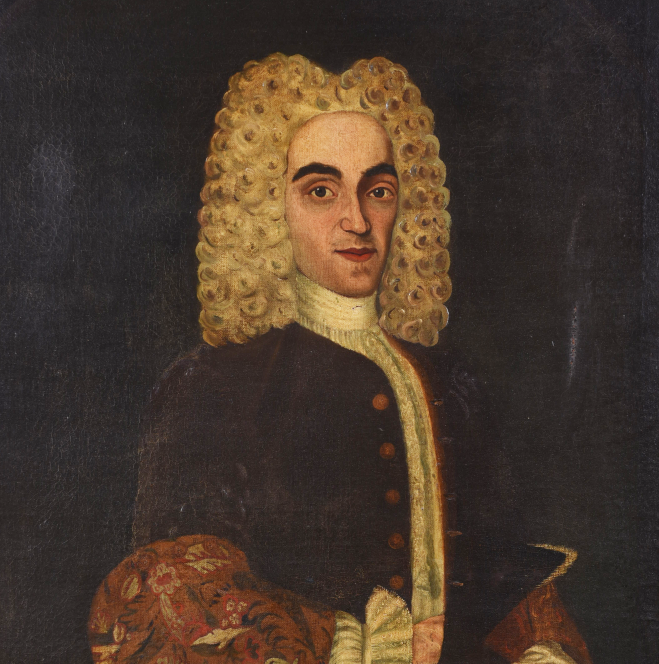
ANTONIO FELICISSIMO Baroncino of Budaq and Marchesino de Piro died before his father. He was Secreto to Grand Master Despuig. He married Elena Grech Balzani as his third wife in 1736 and died in 1739. From this final union was born a son and heir.
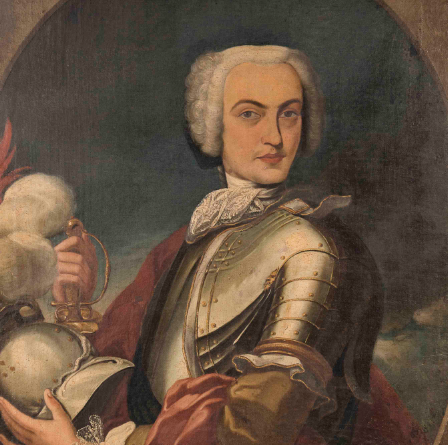
VINCENZO. 2nd Baron of Budaq and 2nd Marquis de Piro 1736-1799. He became a Jurat and also Procurator of the Inquisition. He was interested in military tactics and operations and was appointed Colonel Commandant of the Royal Sicilian Regiment. He helped to raise the rebellion against the French invaders, and was elected to be one of the four representatives of the people. He had married Maria Testaferrata Abela daughter of the 3rd Baron of Gomerino in 1757. He died in 1799 having nominated his eldest son Antonio to the Barony and his second son Giuseppe to the Marquisate.

ANTONIO. 3rd Baron of Budaq 1758-1806 was not left the Marquisate because of his liaison with one Maria Teresa Speranza Campanella de lo Re. They produced four children out of wedlock, 2 of whom took Holy Orders. The couple eventually married and were blessed with a legitimate scholarly and erudite heir.
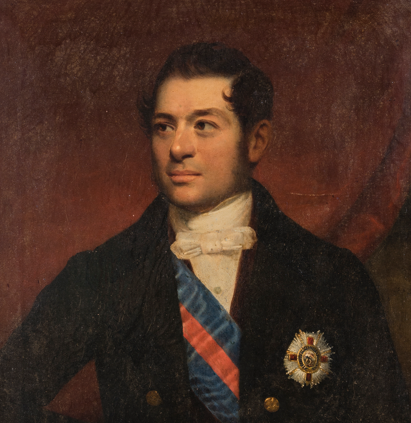
SIR GIUSEPPE MARIA G.C.M.G. 4th Baron of Budaq, 1794-1870. He was the author of ‘A History of the Plague of 1813’ and ‘Pieces of History’ (both written in Italian). The second book was an impassioned answer to Adolphus Slade’s vitriolic and denigrating commentary on Malta. In his book he listed Maltese savants and artists together with their creditable works of merit. He set out to prove that his compatriots had been the principal factors in procuring their emancipation and had voluntarily submitted to England’s help; and that the latter, it had to be remembered, had not lost a single soldier in the procurement of Malta.
According to William Hardiman’s ‘History of Malta’ Sir Giuseppe Maria was an aspirant to the government of the Islands (p.643). He married the wealthy Antonia Moscati Gatto Xara 3rd Baroness of Benwarrad and widow of Sir Paola Parisio G.C.M.G. They lived in the Magnificent Palazzo Parisio where Napoleon had chosen to spend his days in Malta. Giuseppe Maria presented the famous ‘Majmuna Stone’ (now in the Gozo Museum) to the nation. Governor Reid historically appointed him first Maltese Captain Commandant of the Malta Militia. He died without legitimate heirs in 1870 and was succeeded by his sister.
FRANCESCA
5th Baroness of Budach was a spinster. She inherited her brother and died 7 years later in 1877. She attempted to leave her title and estates to the Bishop of Gozo. Following a successful claim in the courts by Guiseppe de Piro he succeeded her. Giuseppe was the eldest son of her deceased first cousin Carmelo.
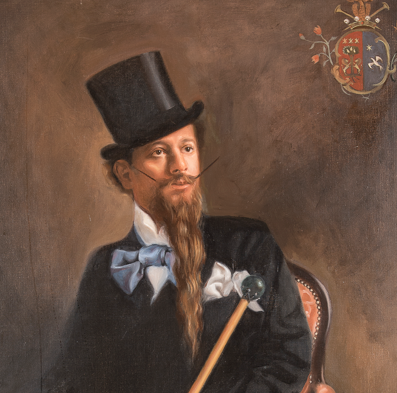
GIUSEPPE (Pinu) 6th Baron of Budach 1845-1916 was a bachelor, a keen gardener, and enthusiastic builder and lover of ceremonial. He was a Knight of Cape and Sword at the Vatican. He devoted his energies to building some noteworthy follies, among them a villa in Rome, a neo-Gothic house in Mdina, and perhaps he created the finest garden in Malta attached to his Villa Gourgion in Lija. He allowed his cousins the Marquises Francesco Xaverio and Giuseppe Lorenzo to use the title and indeed even enjoy some of the patrimony; his law suit over the inheritance of Francesca had established him as the senior de Piro heir and he had no desire to upset his cousins. His own heir was not his younger brother (my great-grandfather Alessandro 1849-1899) because Alessandro died first.
Alessandro had married the heiress Orsola Agius Caruana and she brought a great palazzo in Florence into the family. It had been the seat of the Florentine Commandery and Embassy of the Knights of Malta in the days of the Grand Duchy of Tuscany. One of their seven sons Monsignor Giuseppe de Piro founded the Missionary Society of St Paul and is now a strong candidate for beatification. Pinu’s heirs were his nephews Igino who inherited his titles and the entails of the barony of Budach and his younger brother Pio who inherited the large Gourgion estates.
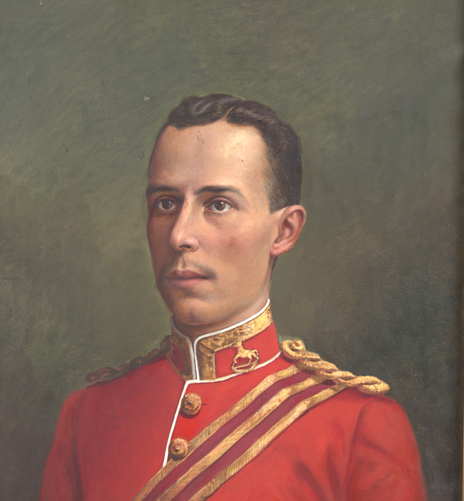
IGINO 7th Baron of Budach 1874-1942. Educated at the Lyceum and the Royal University of Malta. He married my Grandmother Nicolina daughter of Felicissimo Apap Bologna 4th Marquis of Gnien-is-Sultan. He fought in the Boer War and was present at the Siege of Ladysmith (Queen’s Medal three clasps). He was Adjutant for five years to 9th Battalion The King’s Liverpool Regiment. He retired to return to Malta. He was elected President of the Senate and served on the Committee of Privileges of the Maltese Nobility. He was the only member of the Maltese aristocracy in the National Assembly to vote in favour of the adoption of the Maltese language as part of the Constitution. He was elected President of the Casino Maltese. He represented Malta at the Coronation of King George VI. A was a keen gardener and stamp collector, his homes were in Valletta, Attard (now the Malta residence of Grand Master Bertie), St Paul’s Bay and Florence. His heir was his only son.
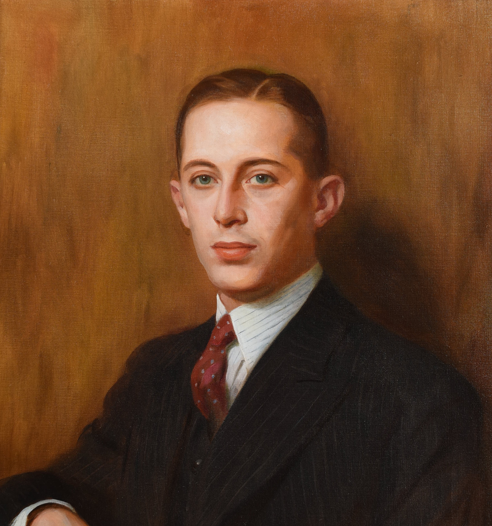
JEROME 8th Baron of Budach and 8th Marquis de Piro 1914-1996. Educated at Collège Champittet, Lausanne, Switzerland. He served as a gunner in World War II in the 2nd A.A. Regiment of the Royal Malta Artillery (Africa Star, 1939-45 Star, War Medal 1939-45, Victory Medal). He had been a member of the Committee of Privileges of the Maltese Nobility for 40 years and for a long period its President. On his retirement, he was elected President of the Committee of Privileges Emeritus ad vitam. Jerome represented the Maltese Nobility in the National Congress and in the National Assembly; also, with my mother at the Coronation of H.M. Queen Elizabeth II. He was a Knight of Honour and Devotion of the Sovereign Military Order of Malta. He was recognised as 8th Marquis de Piro by the Committee of Privileges of the Maltese Nobility.
He married Phyllis Cassar Torreggiani and they had 5 children: Nicholas, Madeleine, Mary, Elizabeth and Margaret.
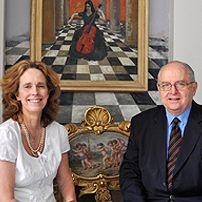
NICHOLAS 9th Baron of Budach and 9th Marquis de Piro b.1941. Married Frances Elizabeth Wilson on October 1st 1970 and has issue: Cosmo, Clement, Louisa and Anton’. The family lived at Painswick House in Gloucestershire for 14 years before returning to Malta in 1990 to open Casa Rocca Piccola to the public.
Nicholas is the author of 6 books: ‘Lost Letters’ (with Kenneth Zammit Tabona and others; Pedigree Books London). ‘The International Dictionary of Artists who Painted Malta; ‘Picking Through The Stones, Notions, Nostalgia and Nonsense’ Poems (both Said International, Malta); Valletta; Mdina; The Temple of the Knights of Malta (all three Miranda Publications with photographs by Daniel Cilia); Costume in Malta (contributor and joint-editor with Vicki Ann Cremona).




